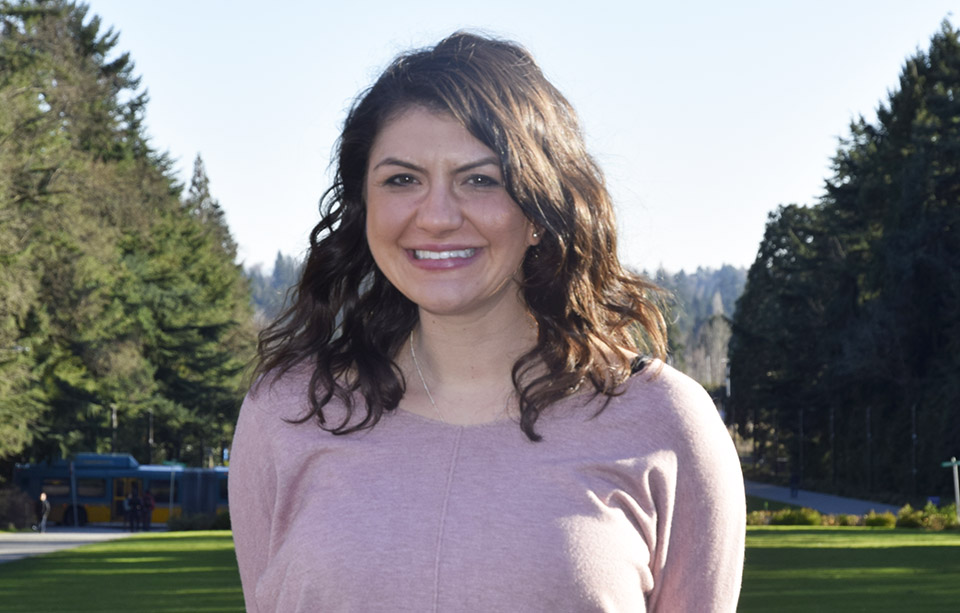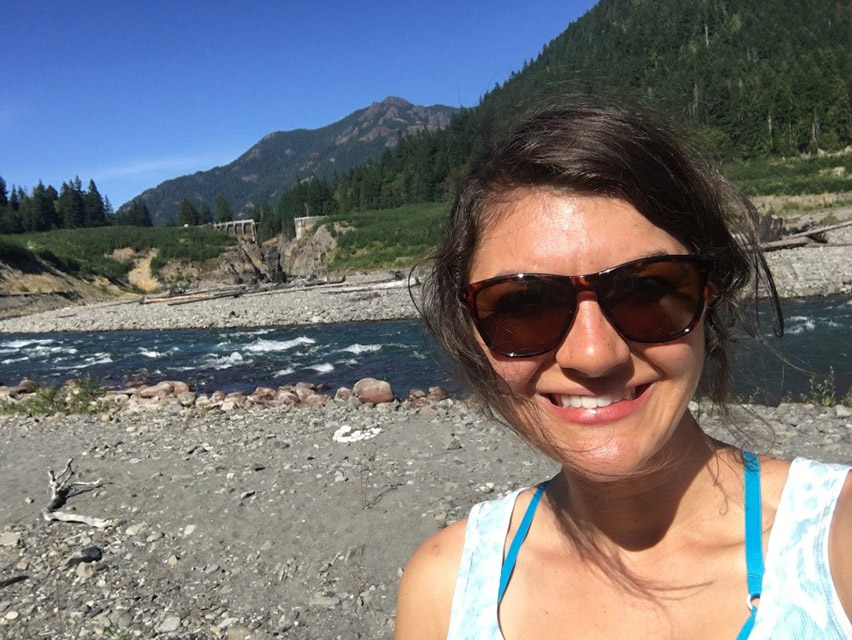April 5, 2018

Claire Beveridge
Ph.D. student, third year
Hydrology and Hydrodynamics
Please describe your research
My research project is developing a “socio-hydrology” computational model for the Elwha River Basin, where water now flows freely following the largest dam removal project in history in 2011. Originally built to fuel regional growth in the 1900s, two dams disrupted the migration of salmon and the flow of sediment. I aim to retrospectively model the feedbacks between the Elwha watershed hydrology, sediment, and socio-political systems. Ultimately, I hope this will help us to better understand the life-cycle of dams with regards to both natural and human systems. I hope that my research will have implications for policy and decision-making in relation to dams being built across the world.
 With the remains of the Glines Canyon dam behind her, Claire explores the sediment deposits in the former Lake Mills reservoir.
With the remains of the Glines Canyon dam behind her, Claire explores the sediment deposits in the former Lake Mills reservoir.
Do you conduct field work and/or travel as part of your research?
My work is largely modeling, however I do make occasional visits to the field to make observations! Last summer I spent a few days hiking around the Elwha watershed to collect sediment samples and gain a better understanding of the natural system. I also met with different Elwha watershed stakeholders including scientists and engineers from various government agencies who study the Elwha, Olympic National Park staff who maintain the trails, local Native American tribe members, and local non-Native American residents.
What do you enjoy most about your field of study?
I love how interdisciplinary my field is. Watershed modeling integrates meteorologists, hydrologists, geomorphologists, ecologists, biologists, economists, politicians…. and more! It can definitely get confusing and overwhelming at times, but that makes it even more of a wonderful challenge. Also, water is so deeply integrated into the livelihoods of humans and integrity environment- which I love having to motivate me every day.
What type of career do you plan to pursue?
My dream job is to work for a nonprofit that focuses on international development in mountainous regions. I hope to continue to do socio-hydrology modeling and research, but also be largely involved with stakeholders, decision-makers and policy.
How did you first become interested in engineering?
I was thinking of which college major to apply to, and wanted to do something math-and-science-y that had a direct impact on people. I learned about civil engineering and actually was first interested in structural engineering because of the idea of being able to build bridges and structures that kept people safe. After starting my undergraduate degree, I became involved in Engineers Without Borders, and we had a water-focused project in southern Peru that got me interested in water security in developing countries. I then changed my focus to environmental and water resources engineering.
How do you spend your spare time?
Definitely spending time with my wonderful family and friends! Like most folks in the PNW, I love spending time outdoors. I also love to exercise as well as read philosophy and anything water-related.
Any other interesting/relevant details?
Prior to graduate school, I practiced as an environmental engineer for three years at CH2M HILL in Oakland, Calif. While working there I obtained my California Professional Engineering license. This year I’ve been heavily involved in getting the “Freshwater Initiative” going for students. I encourage any students who are interested in getting involved in the interdisciplinary water community to check it out!